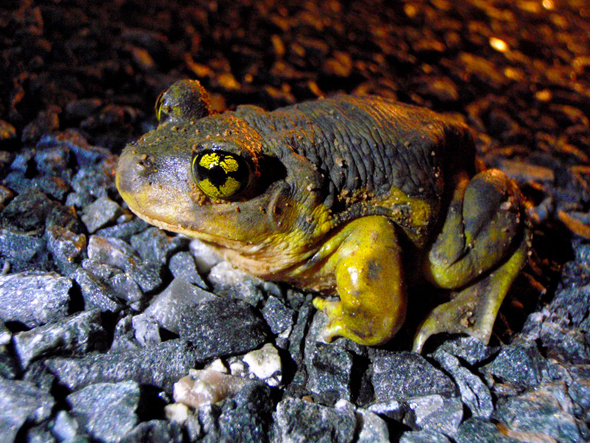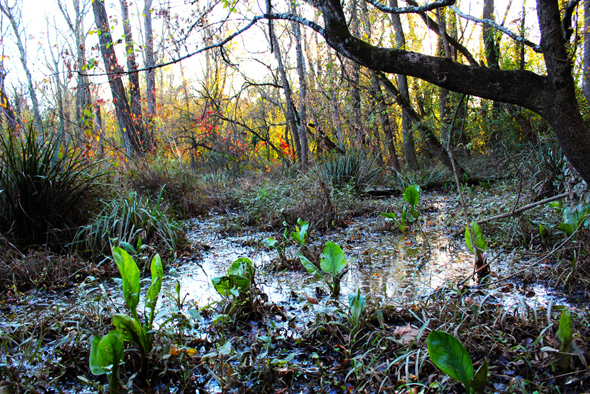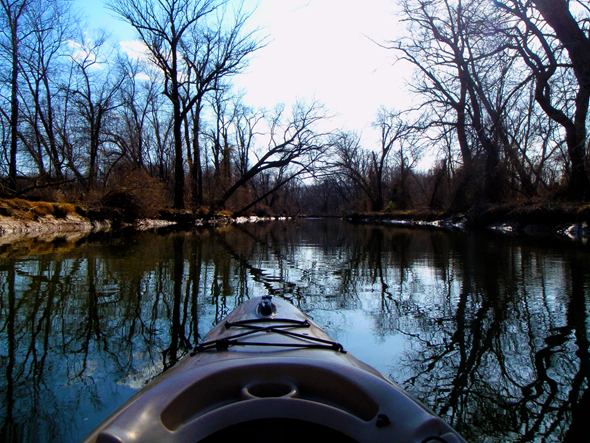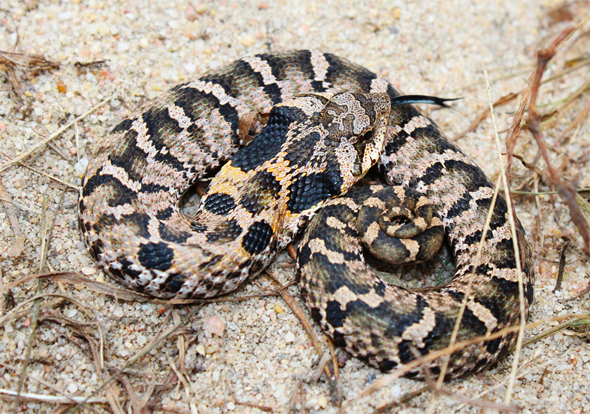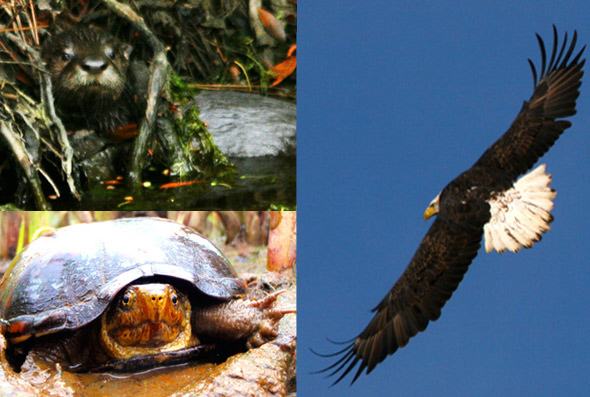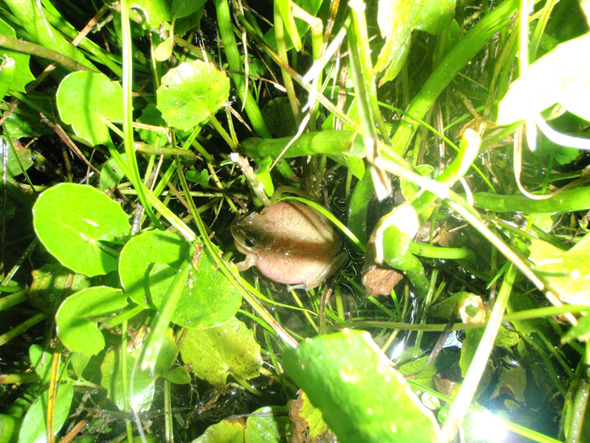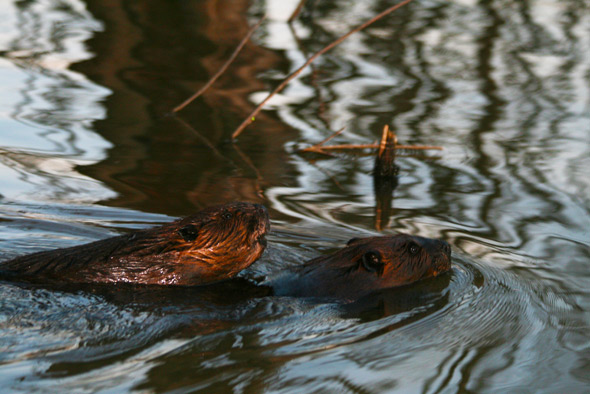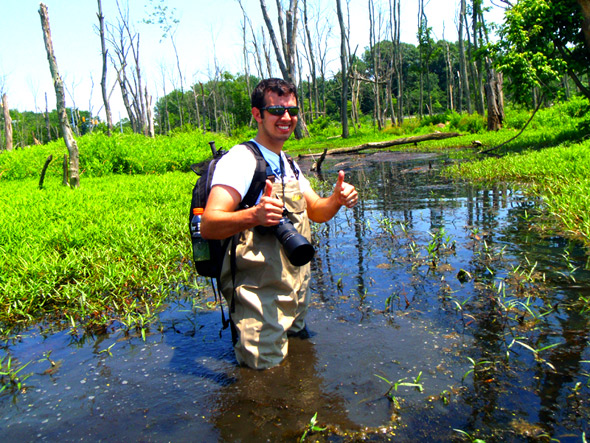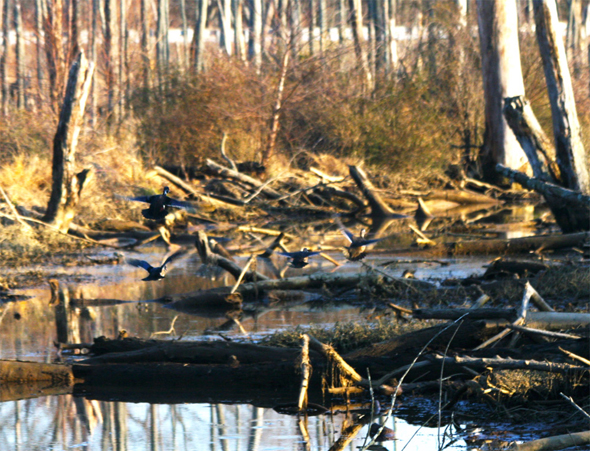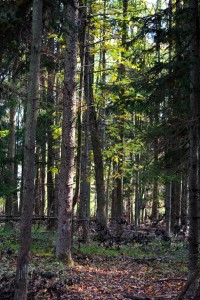 Most of us who live in the northern counties of Maryland rarely envision sandy soil, pine trees, and flooded forests when we consider the wilderness of the Old Line State. Growing up in rural Carroll County, my mind instantly recalls the rolling farm fields, reservoirs, deciduous forests, and Piedmont streams. One of the wonders of Harford County, where I know reside, is how varied the landscape becomes as you cross from east to west, or north to south. It not only has the textbook Piedmont landscapes that remind me of back home, but there are areas that if you were blindfolded and dropped in by helicopter, you would swear you were somewhere in the middle of the Appalachians or southern swamps. Perhaps the most unusual topographic region here is known as the Atlantic coastal plain. In Harford this is the area which is generally found between the Chesapeake Bay and Interstate 95 which more or less makes up the fall line (the division between the coastal plain and Piedmont plateau).
Most of us who live in the northern counties of Maryland rarely envision sandy soil, pine trees, and flooded forests when we consider the wilderness of the Old Line State. Growing up in rural Carroll County, my mind instantly recalls the rolling farm fields, reservoirs, deciduous forests, and Piedmont streams. One of the wonders of Harford County, where I know reside, is how varied the landscape becomes as you cross from east to west, or north to south. It not only has the textbook Piedmont landscapes that remind me of back home, but there are areas that if you were blindfolded and dropped in by helicopter, you would swear you were somewhere in the middle of the Appalachians or southern swamps. Perhaps the most unusual topographic region here is known as the Atlantic coastal plain. In Harford this is the area which is generally found between the Chesapeake Bay and Interstate 95 which more or less makes up the fall line (the division between the coastal plain and Piedmont plateau).
The first time I came out to this heavily populated but underappreciated natural area of Harford I was amazed to find myself feeling as if I were on the Eastern Shore. In contrast to the areas across the bay bridge, it is only a short drive from Baltimore City and the rolling hills of the northern counties. Most of the areas with coastal plain characteristics are further south or towards the Atlantic to the east. In Harford we only get a small sliver, much of which is U.S. Army property and off limits to most of us. From what remains as accessible to the public still takes some grit and determination to traverse by foot due to the knee high mud, mosquitoes, entangling vegetation, and thorns. To me it’s worth it but to the average outdoor enthusiast, perhaps it isn’t the best option for a Sunday stroll. By water on the other hand it is rather enjoyable for everyone, with miles of coastline to explore. Along many of the roads, especially Route 40, there are ways to access tranquil tributaries that offer hours of paddling in some amazing untouched habitat. The slow moving wooded creeks and open marshlands allow an adventurous nature seeker to get lost in both body and soul.
One can see why this area was also favored by the first human inhabitants of this land. I have been told that there was a strong presence by the Native American tribes along this bountiful series of waterways and even my home was built on an area where many artifacts were once found. As far as I know, the people that most likely found themselves harvesting shellfish and hunting deer, bison, and elk along the Route 40 corridor were of the Susquehannock tribe which our wildlife society pays tribute to in our name. I often imagine myself as one of these people living in this alternate world, stalking game through the swampy forests and thanking the land for all the life it has provided my people. Those were different times and surely a vastly different place. Much of the wildlife is said to be greatly reduced in numbers and some species long extinct. To some of these creatures that remain I must think that they continue on as their ancestors had, following their instincts as if humans had never interfered.
The unique soil, bountiful food sources, and abundance of water lead to many unique species of wildlife that call the coastal plain home. Most interesting to me were the reptiles and amphibians that only show up in a few specific locations in Harford and although common in other parts of the state, are rare or absent in the northern portion other than in the coastal habitats. One such species is the Eastern spadefoot toad. The Eastern spadefoot toad in an amazing creature. Found almost exclusively in loose sandy soil, it spends most of its life underground. They receive their name from the protrusion on their hind feet that assists them in burrowing into the soil. These cat-eyed amphibians can be found in only a few specific areas that we know of in Harford. I have seen them in an agriculture area intersected by a road where on a warm spring day after a storm they can be seen traveling across the asphalt from one temporary rain filled pool to the next. They are slow moving and in areas like this the road mortality is particularly high. Their open field type habitat isn’t considered very rich in wildlife so it is particularly vulnerable to housing and commercial developments.
Another species mostly associated with the sandy soils of the coastal plain in Harford is the Eastern hognose snake. This unusual reptile can display a wide variety of coloration from light orange to black and either have patterns or just a solid coloration. The unifying feature is its upturned nose and short, thick appearance. When encountered, the hognose puts on quite a show. They may twist into a moving ball while rattling their tail. They will hiss and flatten out their neck like a cobra. They sometimes will even play “possum” and roll over on their backs to give the illusion that they are dead so predators lose interest. Despite the theatrics, they are non-venomous and rarely have even bitten a human when threatened. These snakes seek a variety of prey but they seem to favor toads above all else. During our participation in the Maryland Amphibian and Reptile Atlas for the last two years we have not found a hognose in Harford County. We have earlier reports that they were found in certain coastal areas and we have identified varies areas that meet their habitat requirements. We hope reports will come in or we will encounter one at a later time.
In Harford there are quite a few species that do not have specific habitat requirements that place them in the coastal plain but are found in greater numbers there most likely because the multitude of river confluences and ground saturation from the low elevation create a plethora of food and water sources. Some species of note are the iconic bald eagle, the river otter, beaver, muskrat, wood duck, and osprey. Since I spend a lot of time searching for turtles I must include that spotted turtles and eastern mud turtles are more numerous in these areas than in others.
One species we still hope to add to our list of those native to Harford is the green tree frog. Typically only found further south, we have historical reports that they inhabit some of the marsh habitat to the far south west. Several other snake species such as the Eastern kingsnake and rough green snake are fairly rare in this area but when found are more typically in the lower elevation areas.
Whether it is paddling down a tidal creek, wading up to my stomach in mud, or fighting through the thicket I will continue my exploration of this rich region. It warms my heart that so many species that I grew up longing to see are now frequently encountered in an area that within minutes can provide all the comforts of society or allow you to feel totally lost in the wilderness. Alongside the creatures of this amazing region, for some time to come I hope to remain at home on the coastal plain.

